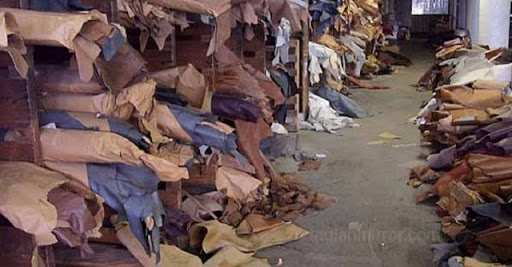Zim to establish first leather design studio
The Government received US$15 million to capacitate the leather industry and the leather value chain.
Zimbabwe is set to establish its first satellite design studio for leather products as it positions itself for enhanced quality standards and scaling up sectoral output along the value chain.
Leather design studios are critical in driving focus to the upper value chain stratum and enhancing higher downstream impact to all stakeholders in the leather sector.
The new project will be done with assistance of the Common Market for Eastern and Southern Africa (Comesa), which has availed about US$15 million funding to Zimbabwe to capacitate industrial operations under the leather sector value chain.
Through its specialised unit, the Africa Leather and Leather products (ALLPI), Comesa is working closely with the Government to facilitate the development of the Zimbabwe leather value chain.
The efforts are aimed at operationalising the Zimbabwe Satellite Design studio to be located at the Zimbabwe Leather institute (LIZ) in Bulawayo.
The revival of the leather sector is being guided by the new Zimbabwe Leather Sector Strategy (2021-2030), which was officially launched in Bulawayo by Vice-President, Dr Constantino Chiwenga, last Friday.
“Working with Comesa, the Government has earmarked the establishment of a satellite design studio for leather products at the Leather Institute of Zimbabwe (LIZ)),” said Dr Chiwenga in his keynote address.
“The purpose of the studio is to facilitate state of the art design and product development, pattern engineering and prototyping of common products such as school shoes, boots for the police, army and security firms, among others.”
The Vice President said the satellite design studio would widen opportunity, especially for micro-small to medium enterprises (MSMEs) leather operators who will be incorporated into the programme.
These efforts are expected to help improve the quality of leather products as well as enhance MSMEs capacity to penetrate regional and international markets.
The setting up of a design studio in Zimbabwe is in view of the establishment of the Regional Design Studio (RDS) in Ethiopia, which is a flagship project for ALLPI endorsed by the Council of Ministers meeting held in Madagascar in 2016. Malawi has also set up a similar facility.
Thus, according to ALLPI, the satellite design studios in ALLPI member states will be linked to the RDS.
“The regional design studio project aims to boost design originality and branding through inculcating design thinking, product development, quality assurance and entrepreneurship, which will contribute to strengthening the Zimbabwe leather clusters’ capacity to participate in national, regional and global export markets,” said ALLPI. Industry and Commerce Minister, Dr Sekai Nzenza, has said that Bulawayo, as the country’s manufacturing hub, would play a leading role in implementation of leather transformation projects.
“I am very pleased to let you know that through our engagements with Comesa, we have received US$15 million to capacitate the leather industry and the leather value chain and this will be implemented through close collaboration with the Bulawayo Leather Institute,” said Dr Nzenza in a recent update in Parliament.
The leather sector is already positioning itself for the expanded market under the African Continental Free Trade Area (AfCFTA) Agreement, which came into force in January this year.
This has seen key industry players agreeing to synergise under the “Zimbabwe Leather Collective”, a strategic approach to scaling up capacity and increase supply for domestic and international markets.
The sector is seen as a low-hanging fruit for Zimbabwe given the country’s competitive advantage in livestock and crop production, which are key sources of raw materials. Cabinet approved the new Zimbabwe Leather Sector Strategy last November as part of measures to position the sector for increased domestic value addition and beneficiation towards export-led industrialisation.
The move buttresses comprehensive sectoral transformation ambition towards high value addition under the National Development Strategy (NDS1 2021-2025), a five-year blueprint that builds towards the broader upper middle-income vision by 2030.
The new strategy, which is a successor to the Leather Sector Strategy (2012-2017), aims at increasing the overall competitiveness of the leather value chain in Zimbabwe and enhancing access to both local and export markets for the finished products.
Among its objectives, the new strategy seeks to increase capacity utilisation of value-added products from 30 percent to 75 percent by the end of 2030, enhance the application of sustainable production technologies by manufacturing companies from the current 10 percent to 60 percent by 2030 and increasing the export of leather products from 10 percent of production to 40 percent.-herald.cl.zw











